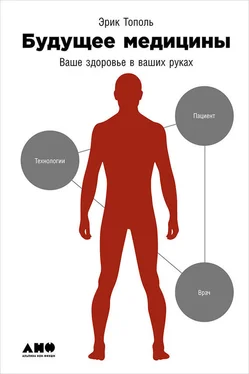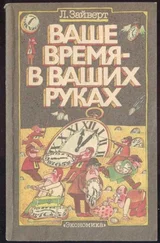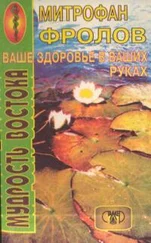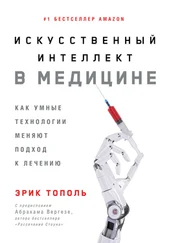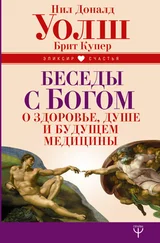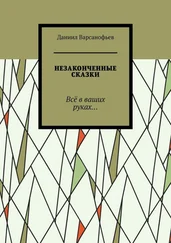52. M. Starr, "Brain-Inspired Circuit Board 9000 Times Faster Than an Average PC," CNET, May 1, 2014, http://m.cnet.com.au/brain-inspired-circuit-board-9000-times-faster-than-an-average-pc-339347168.htm?redir=1.
53. J. Markoff, "Brainlike Computers, Learning from Experience," New York Times , December 29, 2013, http://www.nytimes.com/2013/12/29/science/brainlike-computers-learning-from-experience.html.
54. E. M. Rusli, "Attempting to Code the Human Brain," Wall Street Journal , February 3, 2014, http://online.wsj.com/news/articles/SB100 01424052702304851104579361191171330498.
55. N. B. Turk-Browne, "Functional Interactions as Big Data in the Human Brain," Science 342, no. 6158 (2013): 580–584.
56. D. M. Wenger and A. F. Ward, "The Internet Has Become the External Hard Drive for Our Memories," Scientific American , November 19, 2013, http://www.scientificamerican.com/article/the-internet-has-become-the-external-hard-drive-for-our-memories/.
57. "Neuromorphic Computing: The Machine of a New Soul," The Economist , August 1, 2013, http://www.economist.com/news/science-and-technology/21582495-computers-will-help-people-understand-brains-better-and-understanding-brains.
58. G. Marcus, "Hyping Artificial Intelligence, Yet Again," New Yorker , December 31, 2014, http://www.newyorker.com/online/blogs/elements/2014/01/the-new-york-times-artificial-intelligence-hype-machine.html.
59. D. Basulto, "Artificial Intelligence Is the Next Big Tech Trend. Here's Why," Washington Post , Ma rch 25, 2014, http://www.washingtonpost.com/blogs/innovations/wp/ 2014/03/25/artificial-intelligence-is-the-next-big-tech-trend-heres-why//?print=1.
60. L. Dormehl, "Facial Recognition: Is the Technology Taking Away Your Identity?" The Guardian, May 4, 2014, http://www.theguardian.com/technology/2014/may/04/facial-recognition-technology-identity-tesco-ethical-issues/print.
61. M. S. Bartlett et al., "Automatic Decoding of Facial Movements Reveals Deceptive Pain Expressions," Current Biology 24 (2014): 738–743.
62. J. Hoffman, "Reading Pain in a Human Face," New York Times , April 28, 2014, http://well.blogs.nytimes.com/2014/04/28/reading-pain-in-a-human-face/.
63. S. Du, Y. Tao, and A. M. Martinez, "Compound Facial Expressions of Emotion," PNAS Early Edition, March 31, 2014, http://www.pnas.org/cgi/doi/10.1073/pnas.1322355111.
64. H. Ledford, "The Computer Will See You Now," Nature News , November 9, 2011, http://www.nature.com/news/the-computer-will-see-you-now-1.9324.
65. F. Manjoo, "Conjuring Images of a Bionic Future," New York Times , April 24, 2014, http://www.nytimes.com/2014/04/24/technology/personaltech/app-controlled-hearing-aid-improves-even-normal-hearing.html.
66. "What Is Bothering You Today?" Symptom Checker, the Award-winning Symcat App, accessed August 13, 2014, http://www.symcat.com/.
67a. P. Marks, "Watson in Your Pocket: Supercomputer Gets Own Apps," New Scientist , April 28, 2014, http://www.newscientist.com/article/dn25476-watson-in-your-pocket-supercomputer-gets-own-apps.html?full=true&print=true-.U1-0°17KR4E.
67b. H. Singh, "The Battle Against Misdiagnosis," Wall Street Journal , August 7, 2014, http://online.wsj.com/articles/hardeep-singh-the-battle-against-misdiagnosis-1407453373#printMode.
67c. J. Frieden, "Misdiagnosis. Can It Be Remedied?" MedPage Today , August 17, 2014, http://www.medpagetoday.com/PublicHealthPolicy/ GeneralProfessionalIssues/47232.
68. J. O. Drife, "House," British Medical Journal 330 (2005): 1090.
69. "BMJ Backs HOUSE MD," Z3 , January 17, 2007, http://z3.invisionfree.com/House_Fans/ar/t1817.htm.
70. C. J. Gill, L. Sabin, and C. H. Schmid, "Why Clinicians Are Natural Bayesians," British Medical Journal 330 (2005): 1080–1083.
71. R. N. Chitty, "Why Clinicians Are Natural Bayesians: Is There a Bayesian Doctor in the House?" British Medical Journal 330 (2005): 1390.
72. D. Hernandez, "Artificial Intelligence Is Now Telling Doctors How to Treat You," Wired , June 2, 2014, http://www.wired.com/2014/06/ai-healthcare/.
73. R. M. French, "Dusting Off the Turing Test," Science 336 (2012): 164–165.
74. G. Poste, "Bring on the Biomarkers," Nature 469 (2011): 156–157.
75. A. B. Jensen et al., "Temporal Disease Trajectories Condensed from Population-Wide Registry Data Covering 6.2 Million Patients," Nature Communications , June 24, 2014, http://www.readbyqxmd.com/read/24959948/temporal-disease-trajectories-condensed-from-population-wide-registry-data-covering-6-2-million-patients.
76. C. Mims, "Forget 'The Cloud'; 'The Fog' Is Tech's Future," Wall Street Journal , May 18, 2014, http://online.wsj.com/news/articles/SB1000 1424052702304908304579566662320279406.
77. M. Cottrell et al., "Fault Prediction in Aircraft Engines Using Self-Organizing Maps," 2009, accessed from arXiv, August 13, 2014, http://arxiv.org/pdf/0907.1368v1.pdf.
78. R. Pipke et al., "Feasibility of Personalized Nonparametric Analytics for Predictive Monitoring of Heart Failure Patients Using Continuous Mobile Telemetry," Proceedings of the 4th Conference on Wireless Health, 2013, Article No. 7, accessed from the ACM Digital Library, August 13, 2014, http://dl.acm.org/citation.cfm?id=2534107.
79. C. Smith, "The Digital Doctor Will See You Now: How Big Data Is Saving Lives," Tech Radar, June 18, 2014, http://www.techradar.com/news/computing/the-digital-doctor-will-see-you-now-how-big-data-is-saving-lives-1253870.
80. J. Hamblin, "Who Will Watch You Fall? A Radar Detection Program for the Elderly," The Atlantic, April 2014, http://www.theatlantic.com/health/print/2014/04/old-americans-on-radar/360833/.
81a. P. Clark, "Innovation: Floor Tiles That Can Monitor the Health of the Elderly," Businessweek, March 20, 2014, http://www.businessweek.com/articles/2014-03-20/intellimat-flooring-measures-health-based-on-footstep-patterns.
81b. D. Spector, "Microchips Will Be Implanted Into Healthy People Sooner Than You Think," Business Insider , August 8, 2014, http://www.businessinsider.com/microchip-implants-in-healthy-people-2014-7.
82. W. Koh et al., "Noninvasive In Vivo Monitoring of Tissue-Specific Global Gene Expression in Humans," in PNAS Early Edition, May 5, 2014, http://www.pnas.org/cgi/doi/10.1073/pnas.1405528111.
1. S. Berkley, «How Cell Phones Are Transforming Health Care in Africa,» MIT Technology Review , Septmber 12, 2013, http://www.technologyreview.com/view/519041/how-cell-phones-are-transforming-health-care-in-africa/.
2. A. Caramenico, "Mobile Tech to End Health Disparities," Fierce Health Payer, February 13, 2014, http://www.fiercehealthpayer.com/node/23277/print.
3. C. J. L. Murray and A. D. López, "Measuring the Global Burden of Disease," New England Journal of Medicine 369 (2013): 448–457.
4. C. Murray et al., "The Global Burden of Disease: Generating Evidence, Guiding Policy," Institute for Health Metrics and Evaluation, July 23, 2013, http://www.healthdata.org/sites/default/files/files/policy_report/2013/GBD_GeneratingEvidence/IHME _GBD_GeneratingEvidence_FullReport.pdf.
5. L. O. Gostin, "Healthy Living Needs Global Governance," Nature 511 (2014): 147–149.
6. B. McKay, "Tuberculosis Affects Children More Than Previously Thought," Wall Street Journal , March 23, 2014, http://online.wsj.com/news/articles/SB1000 1424052702304179704579457780012223184.
7. M. Kessel, "Neglected Diseases, Delinquent Diagnostics," Science Translational Medicine 6, no.226 (2014): 1–3.
Читать дальше
Конец ознакомительного отрывка
Купить книгу
